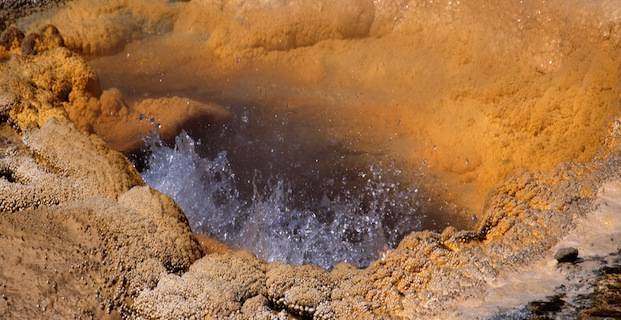Yellowstone Volcano
There are events that take place throughout the history of the world
that are so massive that they are ingrained in our heads from the moment
that we hear of them. The places in which those events took place
become a tourist spot for many people to visit but at one point they
were the site of disaster. One such place is Yellowstone Park. The site
where many people in the US visit every year as one of the national
parks in the country is also the site of the Yellowstone Volcano. This
is what is called a supervolcano which means that its eruptions have
been categorized as a VEI8 (volcano eruption index).
Yellowstone Plateau
There are three calderas in the Yellowstone Plateau. The first one is
the Henry’s Fork Caldera which is located in Idaho and it was formed
1.3 million years ago. The Island Park Caldera is oval shaped and it is
much larger. It extends very much into the Yellowstone National Park.
The Yellowstone Caldera can also be found within the park but the only
one to be visible currently is the Henry’s Fork Caldera. The Island Park
Caldera is much older than Henry’s Fork and its dimensions are close to
80 by 65 km. That should give you an idea of how big a Yellowstone
Volcano explosion could be.
Previous Eruptions
The Yellowstone Volcano has erupted in the past and it will erupt
again. It has been calculated that this supervolcano erupts every
600,000 years with the last recorded eruption happening 640,000 years
ago. Today there have been four recorded VEI8 eruptions recorded at
Yellowstone, with the oldest taking place 2 million years ago and the
most recent one 640,000 years ago.
Where Will The Eruption Take Place?
The massive size of the Yellowstone Volcano means that there are
different areas where the next eruption could take place. More than
likely an eruption of the Yellowstone Volcano would be centered in a
parallel fault zone out of three possibilities. The two areas with the
largest flow of lava are always a possibility but in recent years a
third area has been displaying frequent tremors. Because scientists know
these areas they can monitor them closely. While the massive eruptions
don’t take place often, small ones do take place a lot more frequently
but they are not of the explosive kind.
What Happens When The Yellowstone Volcano Erupts?
The Yellowstone Volcano is known to be a supervolcano because in the
past (2 million years ago) it released over 600 cubic miles of lava and
ash in one single event. When the last eruption took place about 640,000
years ago it is believed that it caused the last ice age. The reason
the ice age took place after the eruption is that the ash went up to the
atmosphere blocking a lot of the heat the planet receives from the sun.
That led to many species dying because vegetation could not survive and
therefore animals had no food. Another supervolcano explosion which
happened in Indonesia about 74,000 years ago is believed to have killed
close to 60% of the human population.
What Would Happen Today?
If the Yellowstone Volcano were to erupt today the consequences could
be even greater than the Sumatra supervolcano which killed close to 60%
of the population. The number of people in the world is a little over 7
billion already and if an ice age were triggered and animals and
vegetation were to die then even fewer people would be able to survive.
Food shortages would take place almost immediately and they would affect
people even on the other side of the world. Those who live in the
nearby area, especially those in Wyoming and the surrounding states,
would stand no chance. The lava would kill most of the people in the
area and those unlikely survivors would asphyxiate when they breathe in
the ash. In other words, a Yellowstone Volcano eruption could mean the
extinction of life on the planet.
What Are The Chances?
Despite the fact that some believe that an eruption at Yellowstone is
overdue the chances of seeing an eruption on any given day are very
small. Those chances have been calculated to be less than 1 in 10,000 of
it happening in a given year and that is including the smaller
eruptions. That is not to say that an eruption will not take place
sometime; eventually the volcano in Yellowstone will erupt. Today magma
is accumulating and tremors can be felt on the ground at Yellowstone.
This serves as a constant reminder that this supervolcano could go off
at any time.

No comments:
Post a Comment